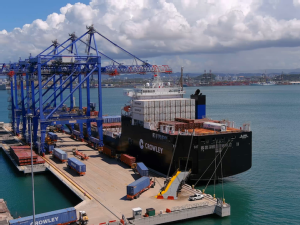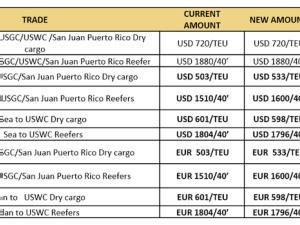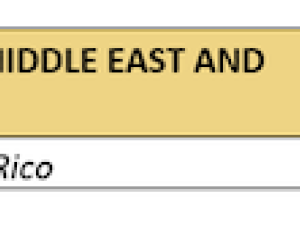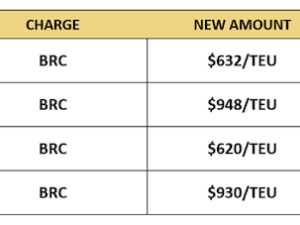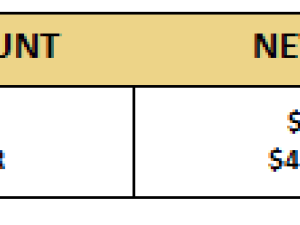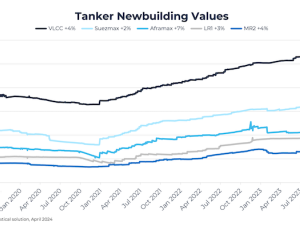Here are the latest China-US container rates, which are heavily impacted by the ongoing developments:
• China-US West Coast prices (FBX01 Daily) rose 1% since last week to $1,533/FEU. Rates are 3% lower than last year’s prices for this week.
• China-US East Coast prices (FBX03 Daily) increased by 3% to $2,827/FEU. This rate outpaces last year’s by 7%.
Key insights below:
1 Ocean rates remain stable ahead of a likely drop as consumer demand plummets.
2 China export air cargo rates have increased by 30% in the last two weeks and at a 13% compounded growth per week for the last month and a half.
3 Digital air cargo bookings remained strong in March, adapting to radically changing rates. However, dropping eBookings last week likely indicate that non-essential items are either being priced out of the mode or scaling back in response to falling consumer demand.
4 In light of Amazon’s prioritization of essential goods, shipments by Freightos.com SMBs to Amazon warehouses plummeted nearly 50% last week. Given that over a third of US eCommerce relies on Amazon, this is likely a lead indicator of severe inventory gaps on America’s most popular ecommerce channel.
Analysis
Though Chinese manufacturing has reportedly rebounded in most of the country, COVID-19’s impact elsewhere across the globe has caused demand to plummet and the industry is responding.
Impact on ocean
The anticipated early peak season in ocean freight is now reversing course as carriers rapidly blank sailings and shippers scramble to cancel orders, even leaving shipments at ports across the globe or diverting to longer sailings to delay accepting goods.
There are reports of warehouse space getting tight and arriving containers piling up at US ports with the potential to cause bottlenecks.
Ocean rates have stayed level, with China-US West Coast prices increasing by only 1% this week. But the rash of cancelled ships during the Chinese shutdown that prevented a collapse of ocean rates may not prevent a sharp price drop this time, as the underlying demand for freight dissipates.
Impact on air
The removal of passenger jet cargo capacity and the demand for essential goods continue to hold air rates up. Additional passenger jets are being used as freighters to ease some of the capacity crunch, but rates continue to be both high and volatile.
China’s limited the already reduced volume of passenger flights entering the country, further increasing prices. Some Freightos.com marketplace forwarders report rate increases of up to 30% out of China in the last two weeks, with a compound weekly growth of 13% over the last six weeks.
Dynamic pricing from WebCargo shows elevated Europe-US air cargo rates with some express rates increasing as much as 100% in the last two weeks. When compared to two weeks ago, increases on both China and European lanes have slowed this past week, indicating a possible leveling off in the near future.
WebCargo data also show a definite slowdown in activity last week compared to the week before. This decline may point to the specialization in air cargo at the moment: non-essential items are either being priced out of the mode or scaling back in response to falling consumer demand. The result is demand for goods essential to coping with COVID-19 outstripping the limited capacity for now.
Other global disruptions
Though airports and container terminals are largely operational, the past week saw some troubling exceptions. In addition to a container ship crew testing positive for coronavirus in China, Italian ports are experiencing disruptions and the Indian supply chain is struggling.
The designation of “green lanes” to expedite road freight through EU border crossings is also strained, as not all member-countries comply. Hungary, for example, is requiring truckers to submit to health checks and leave the country within 24 hours of entering while Turkey requires all entrants to enter a 2-week quarantine, including truckers.
US shift to essential goods only
Amazon is adjusting to the crisis too, announcing two weeks ago that it will no longer be accepting shipments of non-essential goods to its warehouses from its third-party, or Fulfilled by Amazon (FBA), sellers in order to focus on delivering essentials.
Freightos.com marketplace data show this pivot has been painful for FBAs.
